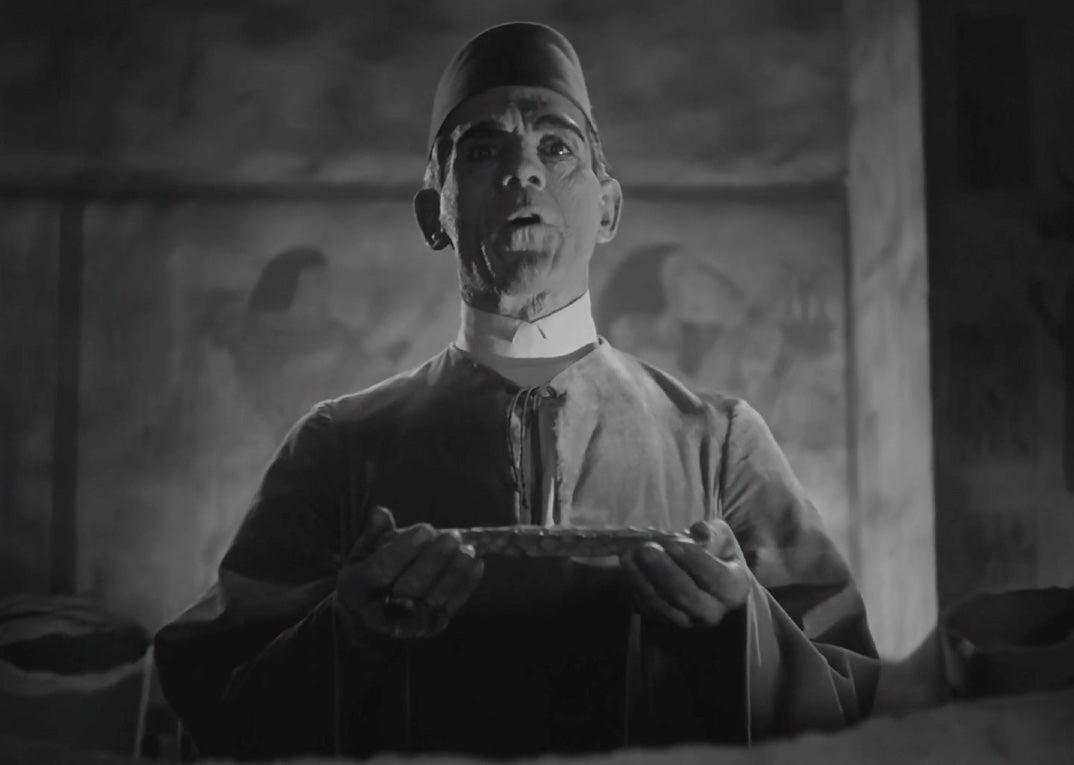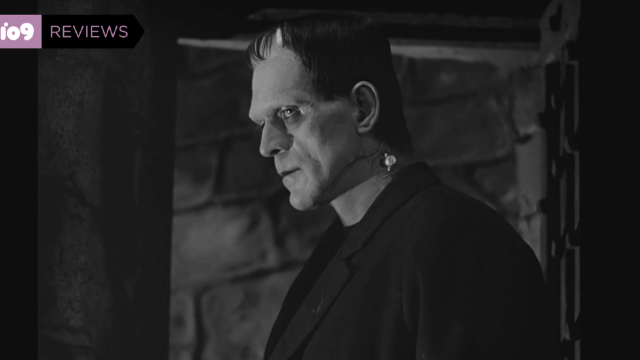“I had a religious conversion… I saw my messiah,” Guillermo del Toro says early in Thomas Hamilton’s new documentary Boris Karloff: The Man Behind the Monster. The moment that so moved the Oscar-winning filmmaker? The first time he saw Karloff’s iconic monster face the camera in 1931’s Frankenstein.
That reverent tone runs throughout The Man Behind the Monster, which pays tribute to the screen legend through talking heads (besides del Toro, we also hear from Karloff’s daughter, Sara, as well as Joe Dante, Leonard Maltin, Ron Perlman, Dick Miller, Roger Corman, John Landis, Peter Bogdanovich, and others) and clips spanning Karloff’s entire career; there are also snippets of audio interviews with the man himself, as well as footage from his turn on This Is Your Life.
While the documentary devotes plenty of time to Karloff’s best-known roles — the tragic lakeside scene in Frankenstein, and Karloff’s clash with director James Whale over how it should be presented, is amply discussed — it also examines his unique place in cinema history. Born in England in 1887 (fun fact: his birth name was William Henry Pratt) to parents who both had Indian ancestry, he later moved to Canada, where he first pursued his acting dreams on the stage, and then found his way to Hollywood. There, he went from an extra to a character actor who landed “tasty supporting roles,” as one interviewee puts it. He managed to bridge the gap between silent and sound films and eventually became an important part of the industry’s growing fascination with horror movies. (He also starred in The Mummy, The Old Dark House, and opposite fellow Universal Monster Bela Lugosi in The Black Cat, to name just a few of his standout titles.) He was an early supporter of the Screen Actors Guild; he weathered the introduction of Hollywood’s Hays Code, which clamped down on provocative movie content for decades; and he enjoyed a career resurgence when a whole new generation of fans discovered his creature features when they became late-night TV staples.

As any look back at Karloff’s career can attest, he was very often typecast as sinister, malevolent characters — and as The Man Behind the Monster openly addresses, he appeared in some films that are now horribly dated, like The Mask of Fu Manchu. But the documentary takes care to point out that even if Karloff was often seen playing the same sort of revenge-seeking ghoul, he could always be counted on to turn in a magnetic performance that transcended the sometimes less-than-inspiring material he was given. Special attention is also reserved for the memorable roles he landed later in his life, including his Broadway debut in Arsenic and Old Lace, his much-loved voice-over work in How the Grinch Stole Christmas!, and his poignant turn as an ageing horror star in Targets.
As you might suspect, watching Boris Karloff: The Man Behind the Monster will inspire a very strong urge to watch as many Karloff films as possible, and Shudder — which starts streaming the doc on January 27 — has you covered. Starting February 1, you can watch Karloff’s star turns in Frankenstein, Bride of Frankenstein, Son of Frankenstein, and House of Frankenstein (in which Karloff plays the mad scientist for a change), as well as The Mummy and The Black Cat. The Old Dark House and Mario Bava’s essential anthology Black Sabbath are already streaming on Shudder.
Wondering where our RSS feed went? You can pick the new up one here.
